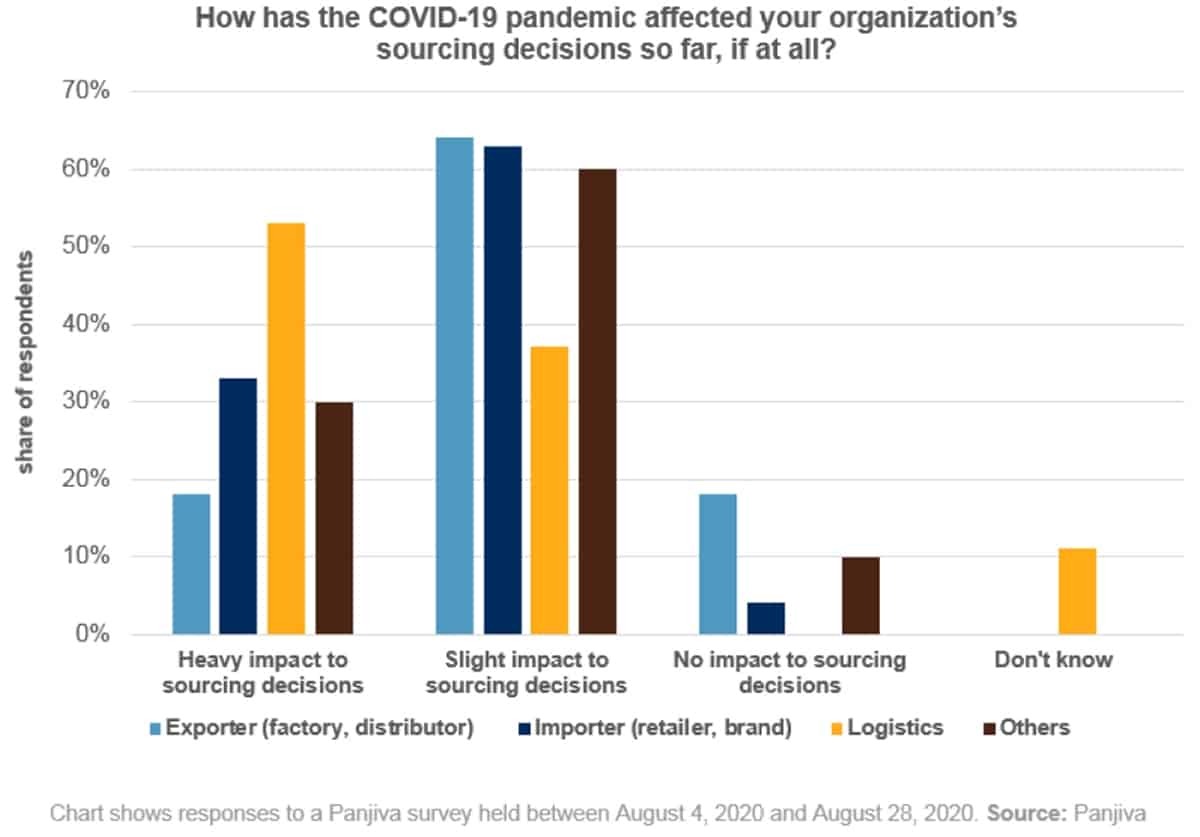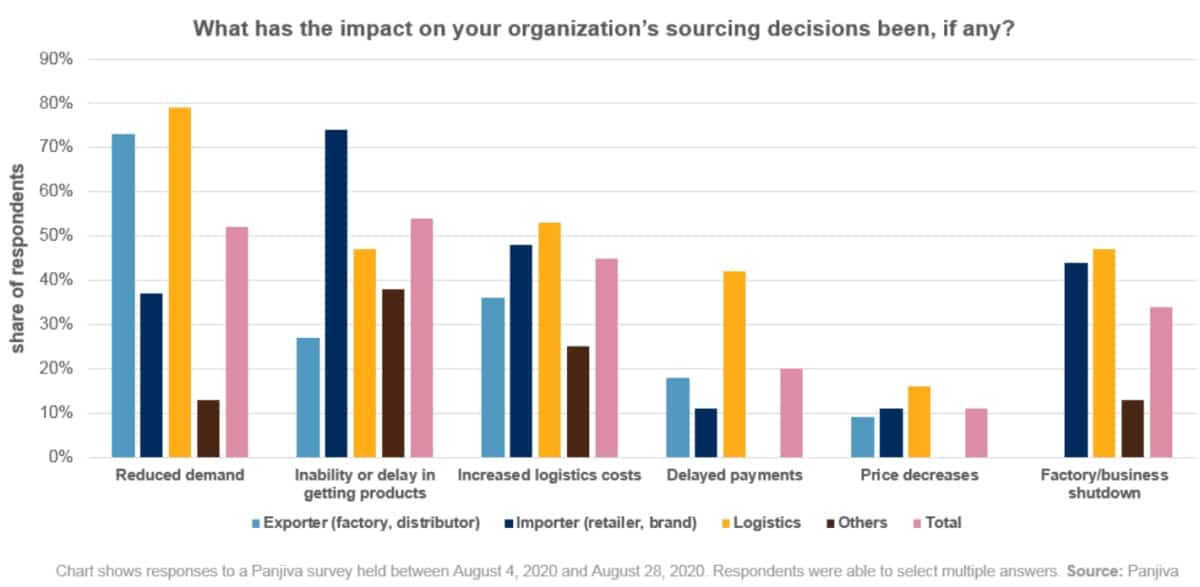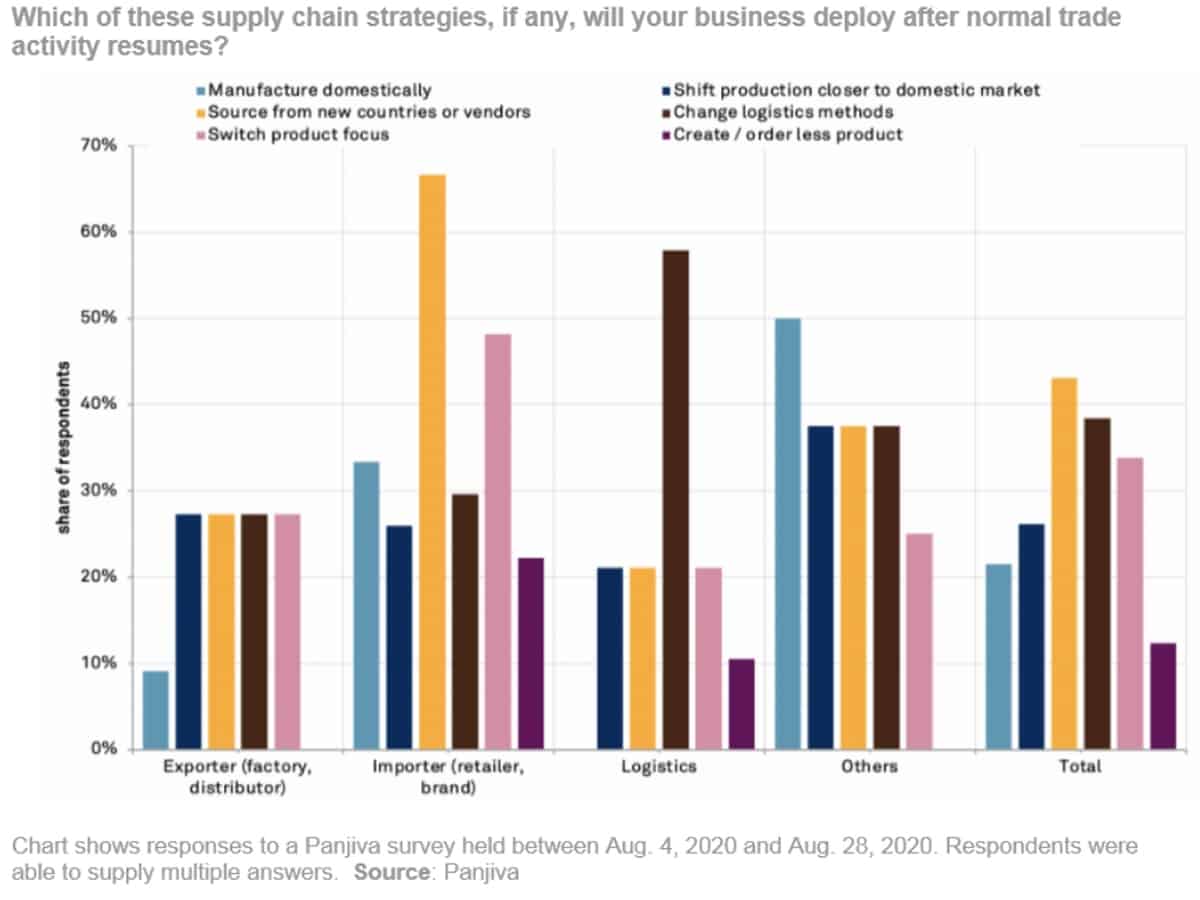The coronavirus will have lasting effects on global supply chains, according to a new survey by Panjiva, a division of S&P Global Market Intelligence.
Annelise McCarthy, head of client engagement for Panjiva, publicly unveiled the results of the new survey on Wednesday during the American Shipper Global Trade Tech summit.
Fallout timetable
“The question that has been on our mind is how long do we anticipate something like this to last?” said McCarthy.
“I don’t think anyone has a hard-and-fast answer. But most are expecting impacts from COVID-19 on supply chains to persist well into 2021. Many are actually interested in keeping strategies to deal with COVID-19 in place into the future.”
Of total respondents, 23.1% said the impact on their business will persist into 2022 or beyond.
For 52.3%, the timetable was 2021. Just 18.5% said impacts will dissipate by the end of this year.
Only 6.5% said they had already resolved impacts or there was no impact. Importers were the most likely to believe impacts would extend to 2022 or beyond.

Measuring the impact
“It comes as no surprise that over 90% of respondents said there was some sort of impact on their global supply chains,” McCarthy continued.
Of the total, 3% said “don’t know,” 6% said “no impact,” 55% said heavy impact. And a surprisingly high 36% said “slight impact.”

Asked whether the high “slight impact” number was because companies are still in crisis mode, McCarthy responded, “I think that could definitely be part of it. I also think a lot of them were able to put a plan in place fairly quickly.”
The specific pandemic effects cited by respondents: inability or delay in getting products (54%), reduced demand (52%), increased logistics costs (45%), factory business shutdowns (34%), delayed payments (20%) and price decreases (11%).

Changes ahead
What are survey respondents planning to do about their businesses and their supply chains after normal trading activity resumes?
According to the survey, 43% will source from new countries or vendors, 38% will change logistics methods, 34% will switch product focus, 25% will shift production closer to domestic markets, 22% will manufacture domestically and 12% will create/order less product.

China dominance
The plan for many companies may be to change sourcing. But fact remains: Most of the U.S. importer supply chains still revolve around China.
Asked about this, McCarthy responded, “I remember having a conversation with one of our large retail customers. This was probably about five or six years ago. They were telling us about this strategy of trying to move out of China. And they were talking about moving from about 90% of products coming from China to 80%. And they had a five- to 10-year time horizon.
“So, these aren’t easy changes that companies are trying to make. It takes time. It takes investment.” Click for more FreightWaves/American Shipper articles by Greg Miller
MORE ON SUPPLY CHAINS: How global shocks are reshaping world trade: see story here. Q&A with BIMCO’s Peter Sand on the future of supply chains: see story here. Q&A with IHS Markit’s Paul Bingham on COVID supply-chain fallout: see story here.







